15 Healthy Homemade Protein Shake Recipes for Lean Muscle
Delicious variations that would make you look forward to your fitness routine
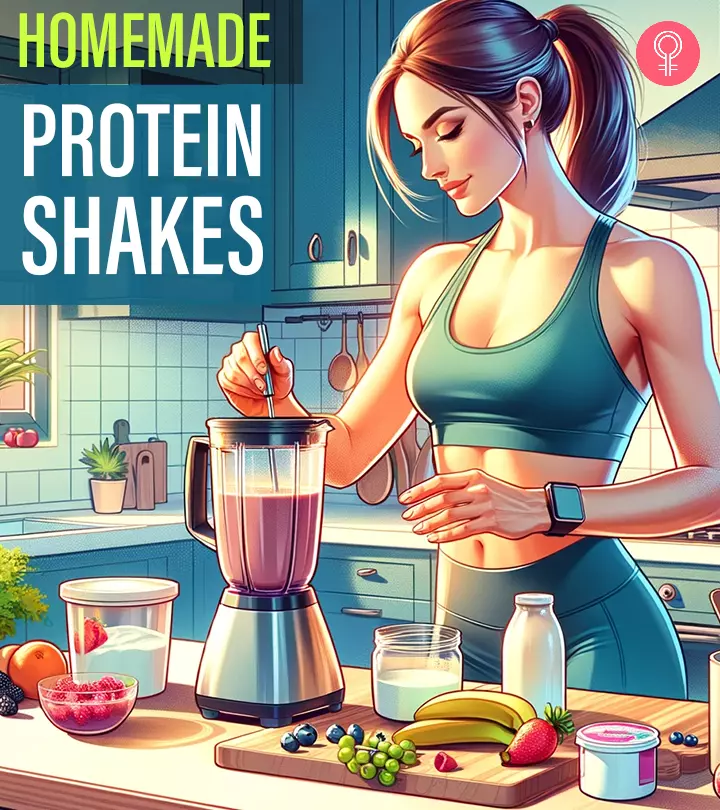
Image: Created with Dall.E
Homemade, healthy protein shakes are your best bet if you want to gain lean muscle. These are safe, easy to make, and keep you satiated before or after a workout session. These shakes help you build muscle and manage your weight. Adding protein shakes to your diet may help keep you feeling full, making it easier to stick to a calorie deficit diet if you’re trying to lose weight.

Protein is essential to keep your body functioning properly. You can easily use these shakes as a meal replacement as well. Mary Sabat, MS, RDN, says, “Protein shakes can be a quick and easy way to make a healthy breakfast if you choose a clean protein and add some healthy ingredients to balance it out. Protein powders, not the prepared ones, will be cheaper, and you will have more control over the quality of your shake.” They are filling, nutrient-rich, and help rebuild muscles. Unlike most commercial protein powders, homemade protein shakes are made with natural ingredients. They also taste better and can be customized according to your needs. Scroll down and check out the recipes of yummy homemade protein shakes.
In This Article
15 Healthy DIY Protein Shake Recipes
1. Chocolate Protein Shake (Protein – 23.6 g)
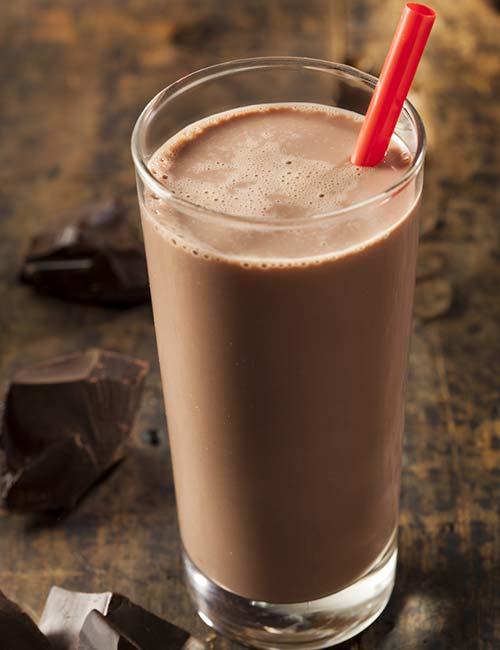
This protein shake is ideal for all bitter chocolate lovers. It tastes sweet (but not too sweet) and is aromatic and an instant mood booster. The ingredients make it a good source of protein as well. It gives you a protein punch from almond butter and yogurt, while also supplying fiber and natural sweetness through apples and dates. Protein and fiber help you stay full for longer, reducing overeating and aiding weight loss (1), (2). Protein also boosts your metabolism and supports muscle repair and growth (1). Dark chocolate and cocoa powder are rich in antioxidants that help fight inflammation and improve metabolism (3). Milk provides calcium and protein, supporting bone health and muscle recovery (4). This creamy shake also curbs sweet cravings, making it a healthier alternative to sugary treats.
Preparation Time: 5 minutes
Servings: 1
Ingredients
- 1 chopped apple
- 1 tablespoon almond butter
- 1 tablespoon grated dark chocolate
- 1 tablespoon cocoa powder
- 1 cup milk
- ½ cup yogurt
- 2 pitted dates
How To Prepare
- Toss the chopped apple, pitted dates, milk, yogurt, cocoa powder, and almond butter into a blender. Whiz it.
- Pour the thick smoothie into a glass and garnish with grated dark chocolate.
 Quick Tip
Quick Tip2. Sattu (Roasted Gram Flour) Low-Calorie Protein Shake (Protein – 16.65 g)
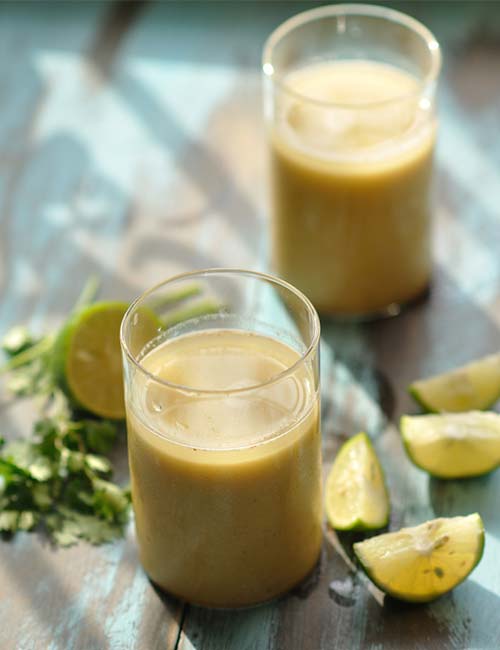
Sattu is a plant-based protein powder made of roasted gram flour. It is also known as the “poor man’s food” because it costs less than 1/10th the price of whey protein. You can make it at home or buy it from an Indian supermarket or any local Indian supermarket. It provides energy and is one of the best protein sources, keeping you full for longer (5), (1). This prevents overeating, reducing your overall calorie intake to aid weight loss. Protein also improves thermogenesis, the process of heat production in the body. This helps boost your metabolism, allowing you to burn more calories even at rest. Furthermore, it supports muscle repair and growth, enhancing overall metabolic activity and helping you achieve your fitness goals (1).
Preparation Time: 5 minutes
Servings: 1
Ingredients
- 4 tablespoons sattu powder
- Juice of half a lime
- 2 tablespoons chopped cilantro
- ½ teaspoon roasted cumin powder
- Salt to taste
- 1 cup water
How To Prepare
- Mix sattu, salt, roasted cumin powder, and chopped cilantro.
- Stir and add the entire cup of water gradually. Make sure there are no lumps.
- Alternatively, you can use coconut water for a healthier touch since it contains electrolytes.
- Pour into a glass, add lime juice, and give one final stir before drinking it.
3. Peanut Butter-Banana Protein Shake (Protein – 43.54 g)

This smoothie is a rich source of protein. Use this as your post-workout meal to reap its goodness. Bananas provide natural sweetness, potassium, and energy, while peanut butter delivers protein and healthy fats that promote satiety (6), (1), (7). Greek or almond yogurt offers probiotics, aiding gut health and digestion (8). Chia seeds are rich in omega-3s and fiber, supporting heart health and managing hunger pangs to keep you from overeating (9).
Preparation Time: 5 minutes
Servings: 1
Ingredients
- 2 medium-sized bananas
- 2 tablespoons peanut butter
- 2 cups Greek yogurt/almond yogurt
- ½ cup full-fat milk/soy milk
- 1 tablespoon chia seeds
- Cocoa powder
How To Prepare
- Add bananas, yogurt, milk, and peanut butter to a blender.
- Blend to a smooth, thick smoothie.
- Add chia seeds and sprinkle cocoa powder on top. Enjoy!
4. Oatmeal-Apple Protein Shake (Protein – 21.48 g)
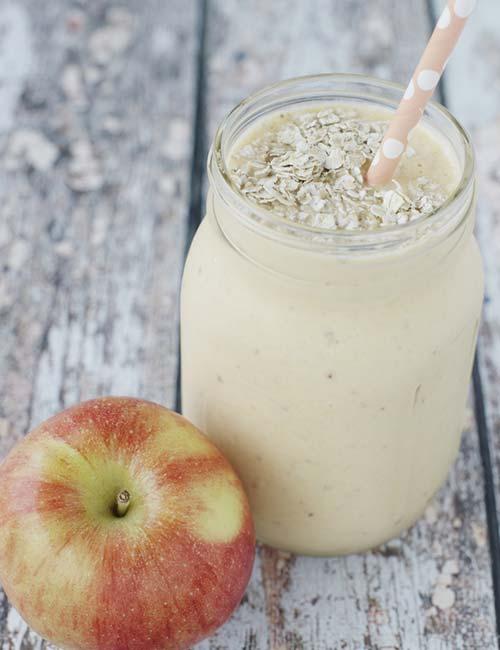
Oatmeal is a slow-digesting carb that stabilizes blood sugar and reduces cravings to keep you from unhealthy foods (10). Apples add fiber to the shake, promoting satiety and boosting digestion. The phytonutrients in the apple also help keep your blood sugar levels under control (11). Pair it up with milk for a thick breakfast protein shake that will keep you full for a long time.
Preparation Time: 5 minutes
Servings: 1
Ingredients
- 3 tablespoons oatmeal
- 2 cups milk
- 1 peeled and chopped apple
- 3 tablespoons almond butter
- Cocoa powder
How To Prepare
- Blend all the ingredients at high speed until you get a thick, smooth shake.
- Sprinkle some cocoa powder and enjoy
5. Oatmeal, Blueberry, And Chia Seeds Protein Shake (Protein – 24.72 g)
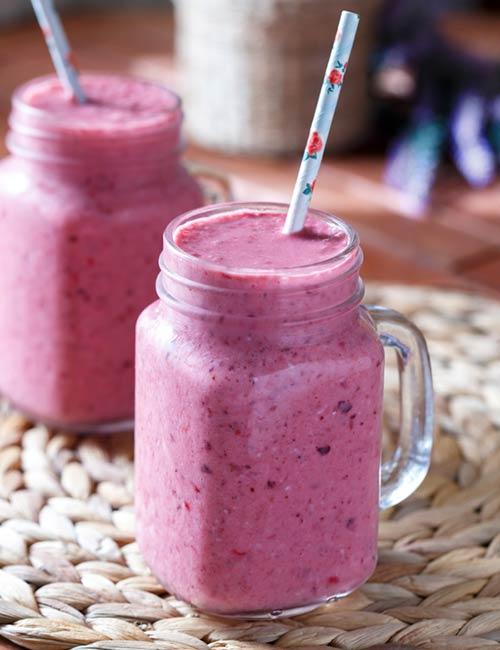
This amazing protein-loaded smoothie is a great replacement meal and one of the best post-workout homemade protein shakes. Blueberries are low in calories but rich in antioxidants that help fight inflammation and support metabolism (12) (13). Chia seeds and oatmeal provide fiber, aiding satiety and reducing hunger (9), (10). Peanut butter adds protein and healthy fats, promoting a feeling of fullness (7). This combination makes the shake a filling, nutrient-dense choice to support weight management.
Preparation Time: 5 minutes
Servings: 1
Ingredients
- ½ cup blueberries
- 1 tablespoon chia seeds
- 2 tablespoons oatmeal
- 2 cups of milk
- 1 tablespoon honey
- 1 tablespoon peanut butter
How To Prepare
- Blend all the ingredients on high speed to get a thick, smooth shake.
- Add a handful of crushed ice and pulse for a couple of seconds.
- Transfer to a tall glass and enjoy!
6. Blueberry, Almond Butter, And Banana Smoothie (Protein – 26.7 g)
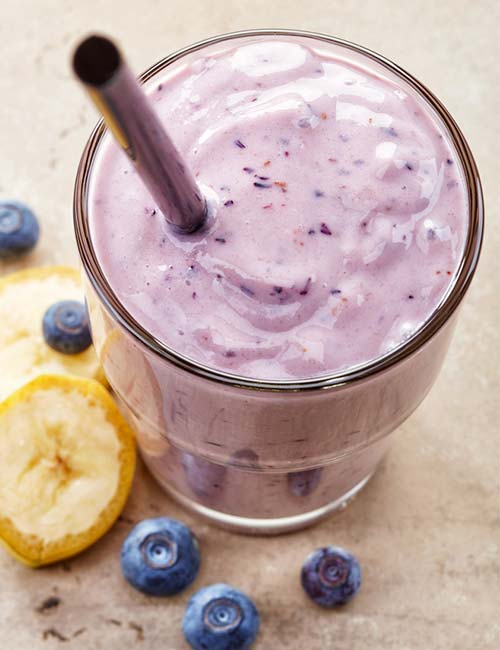
Blueberries are loaded with antioxidants and vitamin C that help fight inflammation and support metabolism (12). Almond butter contributes healthy fats and protein, enhancing satiety to keep you from overeating (7), (1). And, Greek yogurt also provides protein, along with probiotics that support digestion and gut health (8).
Preparation Time: 5 minutes
Servings: 1
Ingredients
- 1 cup blueberries
- 1 banana
- 2 tablespoons almond butter
- 1 cup Greek yogurt
How To Prepare
- Puree all the ingredients at high speed in a blender.
- Pour into a glass, and enjoy!
7. Banana, Ragi, And Chia Seeds Shake (Protein – 15.5 g)
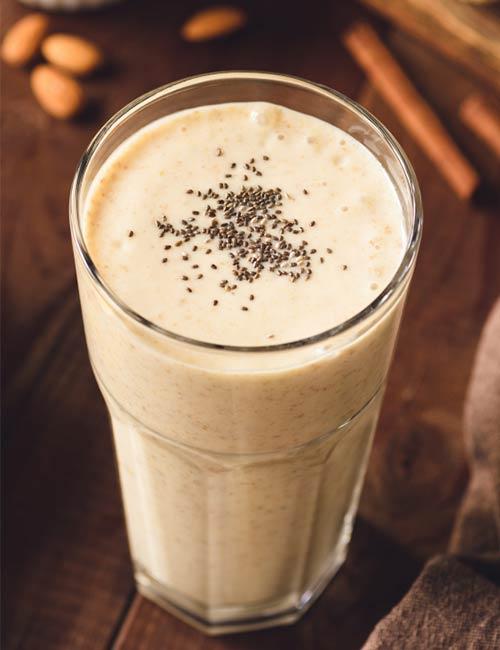
Finger millet (ragi) is an excellent source of protein, calcium, and dietary fiber. It helps control hunger and promotes weight loss. It also contains iron that may help improve the body’s hemoglobin levels (14), (15). Bananas provide natural sweetness and energy (6). The shake also contains chia seeds that are rich in omega-3 fatty acids and fiber, supporting heart health and managing hunger pangs to prevent overeating (9). This shake is a wholesome option for sustained energy.
Preparation Time: 5 minutes
Servings: 1
Ingredients
- 2 small bananas
- 3 tablespoons sprouted finger millet (ragi) powder
- 1 tablespoon chia seeds
- 6 almonds
- 1 cup milk
- 1 tablespoon powdered jaggery
- ¼ cup warm water
How To Prepare
- Add almonds and chia seeds to the blender and pound to a smooth powder.
- Add the rest of the ingredients and blend on high speed until you get a smooth, thick shake.
- Drink immediately.
8. Alphonso Mango-Almond Milk Protein Shake (Protein – 24.84 g)
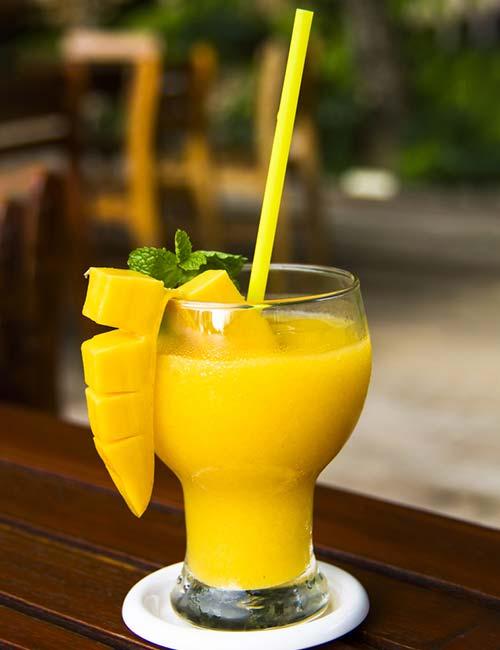
This is a great post-workout shake as the carbs from the mango will help instantly replenish the depleted glycogen or carb stores in the body (16). Almond milk and chia aid muscle recovery by providing a good amount of protein (17).
Preparation Time: 5 minutes
Servings: 1
Ingredients
- 1 cup chopped Alphonso mango
- 1 cup almond milk
- 1 oz cashew nuts
- 2 tablespoons chia seeds
- 1 cup chilled Greek yogurt
How To Prepare
- Toss the chopped Alphonso mango, milk, and chilled yogurt into a blender.
- Whiz it and pour it into a tall glass.
- Add chia seeds and stir well before drinking.
9. Vegan Pea Protein Meal Replacement Protein Shake (Protein – 16.5 g)
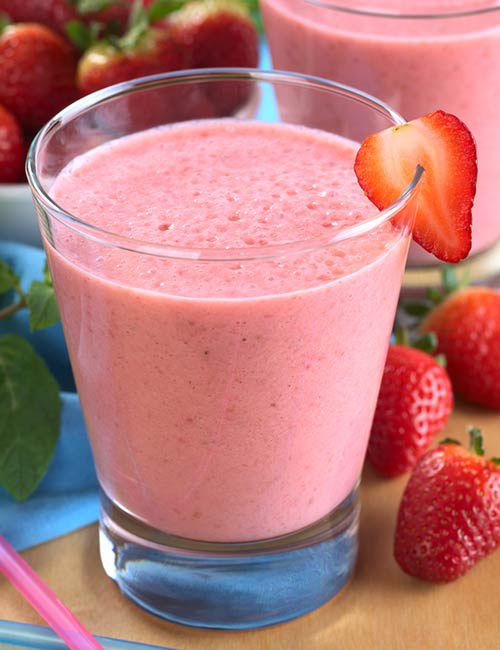
Pea protein is a plant-based, easily digestible protein that supports muscle maintenance (18). This shake is dairy-free and gluten-free, loaded with protein, and tastes amazing. Adding blueberries or strawberries (or both) makes the consistency thicker and enhances the taste. These berries are also low in calories and rich in antioxidants that help fight free radicals, in turn, reducing oxidative stress that may cause weight gain (19).
Preparation Time: 5 minutes
Servings: 1
Ingredients
- 3 tablespoons pea protein (homemade or store-bought)
- 1 cup almond milk
- ½ cup strawberries
- A pinch of nutmeg powder
- 1 teaspoon powdered jaggery
How To Prepare
- Toss all the ingredients into the blender and blend well.
- Pour it into a glass, add 2 ice cubes, and drink up.
10. Almond-Cocoa Protein Shake (Protein – 12.92 g)
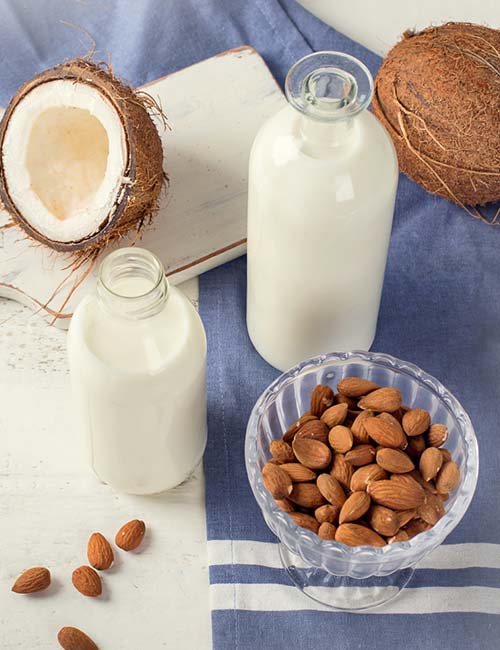
Almonds and coconut make a great pair. Mixing these two with a cup of regular milk or almond milk can enhance the taste and be nutritious. Almonds and coconut also provide healthy fats and protein that promote satiety and aid weight loss (7), (1). Cocoa powder is rich in antioxidants that soothe inflammation and aid metabolism (3).
Preparation Time: 5 minutes
Servings: 1
Ingredients
- 10 almonds
- 1 cup milk or almond milk
- 2 tablespoons grated fresh coconut
- 1 teaspoon cocoa powder
- 1 teaspoon vanilla extract
- ¼ cup cashew milk
- 2 pitted dates
How To Prepare
- Blend the almonds, coconut, milk, and dates.
- Pour it into a glass.
- Stir in cashew milk, cocoa powder, and vanilla extract. Sip it!
11. Hemp Green Protein Shake (Protein – 17.9 g)
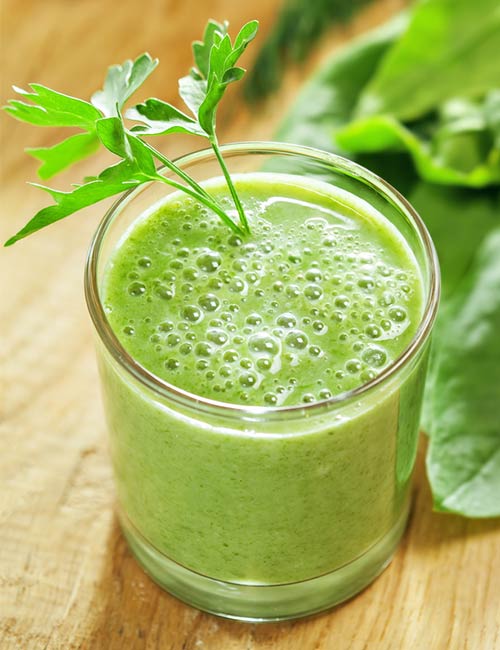
Hemp protein is made from hemp seeds and greens like spinach. It is a complete protein source, containing all essential amino acids that aid muscle repair. It is also a good source of dietary fiber that promotes satiety to aid weight loss and hence can be used as a meal replacement protein shake (20).
Preparation Time: 5 minutes
Servings: 1
Ingredients
- 3 tablespoons hemp powder
- 1 tablespoon ground sunflower seeds
- 1 cup baby spinach
- A pinch of salt
How To Prepare
- Toss the baby spinach into a blender and blend into a smooth paste.
- Pour it into a glass and add salt, hemp powder, and ground sunflower seeds.
- Stir well before drinking.
12. Vegan Raspberry-Banana Protein Shake (Protein – 16.88 g)
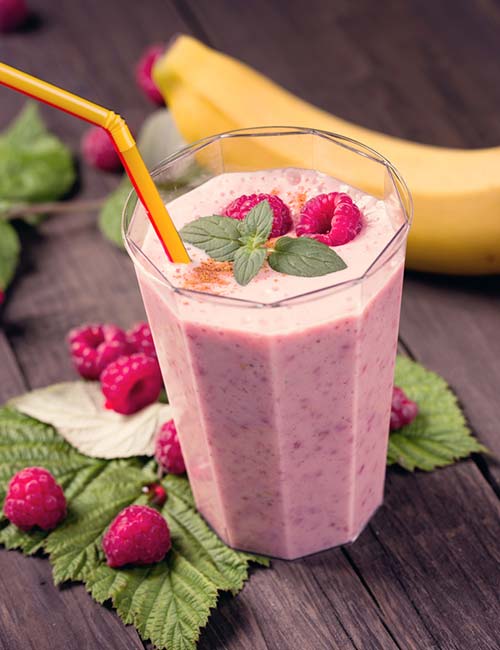
Antioxidants, protein, calcium, iron, and energy – you have everything in this protein shake. A wholesome meal on its own, it is deliciously rich too. Raspberries are high in antioxidants and fiber that help support metabolism and promote satiety. Antioxidants also help fight free radicals that cause oxidative stress that can damage body cells (21). Bananas provide natural energy, while hemp protein provides all the essential amino acids needed for muscle repair. It also provides fiber that promotes satiety and keeps you from overeating (6), (20).
Preparation Time: 5 minutes
Servings: 1
Ingredients
- ½ cup raspberries
- 1 medium banana
- 2 tablespoons almond butter
- 1 cup almond milk
- 1 tablespoon hemp protein powder
- 1 tablespoon ground flaxseed
- ¼ cup of water
How To Prepare
- Add all the ingredients except water to a high-speed blender and puree to a smooth shake.
- Add water to adjust the thickness and pulse for a couple of seconds.
- Chill and enjoy.
13. Soy Milk-Strawberry Protein Shake (Protein – 24.72 g)
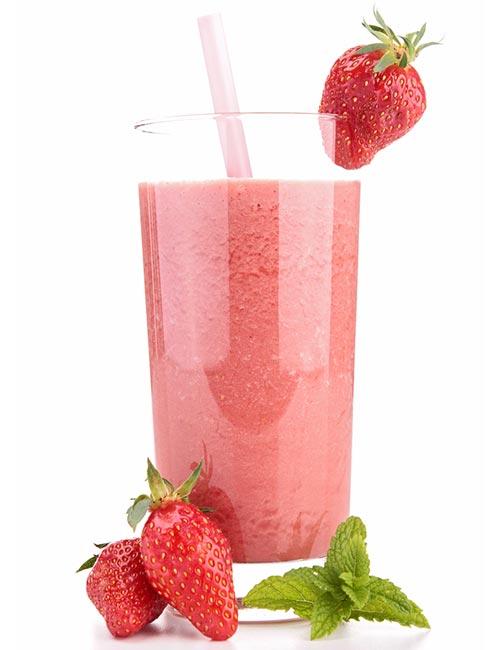
This is a yummy and smooth vegan protein shake that kids of all ages (pun intended!) will enjoy. It contains soy milk, a high-protein, dairy-free option that supports muscle building (22). The high protein content aids weight loss and keeps you full for longer, preventing overeating (1). Strawberries are rich in antioxidants that help fight free radicals to reduce oxidative stress that can lead to inflammation and weight gain (23).
Preparation Time: 5 minutes
Servings: 1
Ingredients
- 2 cups soy milk
- ½ cup chopped strawberries
- 1 tablespoon ground almond
- 1 tablespoon ground melon seeds
- 1 teaspoon cocoa powder
How To Prepare
- Toss all the ingredients into the blender and blend into a thick smoothie.
- Pour it into a glass. Add two ice cubes if you want and drink up!
 Quick Tip
Quick Tip14. Hot Chocolate-Cashew Meal Replacement Protein Shake (Protein – 16.35 g)
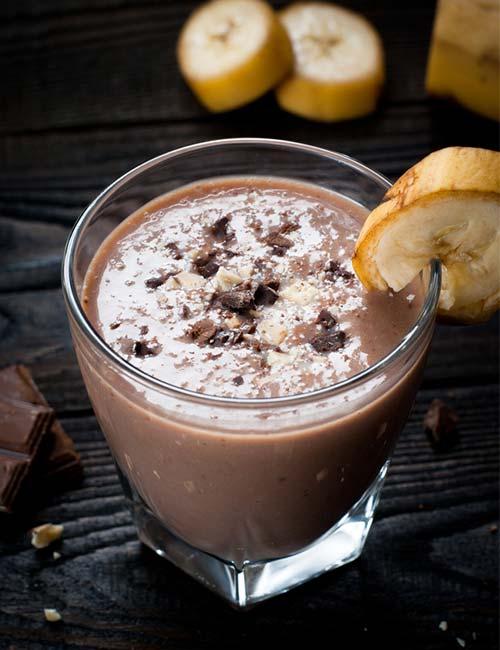
This lip-smacking protein shake is a great breakfast replacement meal. Cashew nuts provide protein and healthy fats, both of which promote satiety (1), (7). This prevents overeating, known to promote weight gain over time. Cashews also give the shake a creamy texture. Dark chocolate and cocoa powder are rich in antioxidants that soothe inflammation and aid metabolism (3). Since the caloric values of both cashews and chocolate are on the higher side, avoid having it as a snack.
Preparation Time: 5 minutes
Servings: 1
Ingredients
- 1 banana
- 1 cup full-fat milk
- 2-3 tablespoons cashew nuts
- 2 teaspoons cocoa powder
- 2 tablespoons grated dark chocolate
How To Prepare
- Toss all the ingredients into a blender.
- Blend into a thick and smooth paste.
- Pour it into a glass and sip.
15. Almond-Coconut Protein Shake (Protein – 23.53 g)
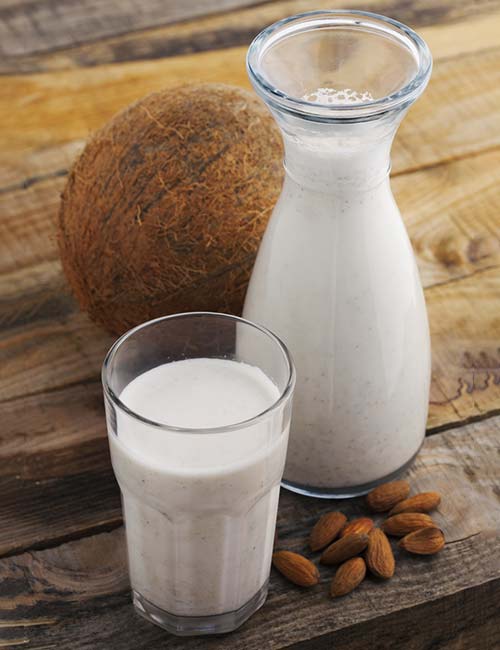
Almonds are a great source of protein – 20 almonds contain about 5 grams of protein (24). Milk offers an extra dose of protein, and flax seeds give you your daily dose of omega-3s. Protein helps you feel satiated, keeping you from overeating, reducing your overall calorie intake, and aiding weight loss. It also boosts your metabolism and helps burn more calories even at rest. Additionally, it supports muscle repair and growth (1). The omega-3 fatty acids in flax seeds are good for heart health (25). Coconut contributes medium-chain triglycerides, known to promote satiety and boost metabolism (26).
Preparation Time: 5 minutes
Servings: 1
Ingredients
- 20 almonds
- ½ cup unsweetened dried coconut
- 2 ½ cups water
- 1 teaspoon cinnamon powder
- 1 tablespoon honey
- 2 tablespoons ground flax seeds
- 2 cups of milk
How To Prepare
- Soak the almonds and the dried coconut overnight in water.
- Discard the water in the morning.
- Blend the almonds and coconut until you get a coarse powder.
- Add milk and blend to get a thick, smooth shake.
- Add cinnamon powder, ground flaxseed, and honey. Mix well.
- Serve in a tall glass garnished with a dash of cinnamon powder.
Kyan, a fitness blogger, shared his favorite protein shake recipe, which includes ingredients like cherries, mangoes or pineapple, banana, protein powder, milk (preferably almond milk), peanut butter (optional), and maple syrup or honey. He says, “I put in some fruit and some milk, then attach the blender blades and top. You’re ready to blend after that (i).”
These protein shakes are easy to prepare and can help your body meet your daily protein requirements. But are they good for weight loss? Let us find out.
Key Takeaways
- Homemade protein shakes made with natural ingredients are healthy alternatives to commercial protein powders.
- They are quick and easy-to-add breakfast recipes that are nutrient-rich and filling at the same time.
- You can customize these protein shake recipes according to your taste and needs to help rebuild your muscles.
Are Protein Shakes Good For Weight Loss?
Research suggests that dietary protein may help with weight loss and management (27). A study evaluating the effectiveness of soy and non-soy-based protein sources found that these meal replacements could help reduce abdominal obesity, improving body composition (28).
Further, a high-protein diet may also promote satiety, thereby reducing hunger pangs and the risk of overeating. Thus, protein shake consumption with a calorie deficit, a well-balanced diet, and exercise may help you lose weight. However, you should note that excessive protein intake may impose a metabolic burden on the bones, kidneys, and liver and increase the risk for coronary heart disease (29). Therefore, always consult a registered dietitian before including protein shakes in your diet.
Apart from weight loss, protein shakes can also help you with other fitness goals. Keep scrolling to learn more.
Role Of Homemade Protein Shakes In Different Fitness Goals
Making your protein shakes at home gives you full control over the ingredients used, allowing you to customize them to fit your specific needs. Here is how they can assist with different fitness goals:
- Muscle Building And Recovery
Protein plays a key role in building and repairing muscles. So, the above homemade protein shakes can aid post-exercise recovery. This is particularly helpful for those doing strength training or bodybuilding, as it aids muscle protein synthesis (30).
- Improving Athletic Performance
Consuming homemade protein shakes may enhance endurance and overall athletic performance. The body uses protein not only to repair muscles but also to support overall energy levels, essential for consistent performance in endurance sports or high-intensity workouts (31).
- General Health And Wellness
These protein shake recipes are a great way to supplement your diet with essential vitamins, minerals, fiber, and healthy fats, all of which are important for your overall health and wellness (32). For instance, chia seeds provide omega-3 fatty acids that help promote heart health (9). Similarly, berries offer antioxidants that help combat oxidative stress to prevent inflammation linked to an increased risk of chronic diseases like type 2 diabetes, heart disease, and cancer. (12). Many of these recipes also include liquids like milk or water that keep your body well-hydrated.
Homemade protein shakes are great. However, not everyone’s taste preferences are the same. The following section takes you through some substitutes for the ingredients mentioned in the above protein shake recipes.
Ingredient Substitutes For Homemade Protein Shakes
Here are some ingredient substitutes you can add to your homemade protein shakes:
- If you are a vegan, replace dairy milk in the recipes with plant-based alternatives, such as almond, soy, oat, or coconut milk. Similarly, use plant-based yogurt, made from almonds, soy, or coconut, instead of consuming Greek yogurt.
- Vegans can also substitute honey with maple syrup, agave nectar, or dates for sweetening.
- Plant-based protein powders like pea protein, hemp protein, and soy protein are also ideal for vegans and vegetarians.
- If you are diabetic, skip the sweeteners or use non-caloric sweeteners like stevia.
- If you are allergic to nuts, replace nut milk with oat, rice, or coconut milk.
- Similarly, replace nut butter with sunflower seed butter or tahini.
- If specific fruits or vegetables are unavailable, use frozen or seasonal varieties.
Making homemade protein shakes is a convenient and nutritious way to stay on top of your health goals. However, you need to properly store ingredients to maintain their freshness and quality. Learn more about it in the following section.
Storage Tips For Homemade Protein Shakes
Ideally, homemade protein shakes are best consumed fresh to retain their nutritional value and flavor. However, if you cannot do so, here are some storage tips you can follow:
- Store them in an airtight container or bottle in the refrigerator for up to 24 hours. Always stir or shake well before drinking, as some ingredients may settle.
- Label prepped portions with the date and discard any that seem off in smell or taste.
- Instead of storing prepped protein shakes, prep and freeze individual ingredient portions in freezer bags or containers. Blend them with liquid and other fresh ingredients whenever you want.
- If you need your shake on the go, use an insulated bottle to keep it cool for a few hours. You may also add ice cubes or use frozen ingredients to help maintain the chill.
Infographic: Tasty Protein Shakes To Try
The above protein shake recipes can help you boost your muscle mass and satiate your hunger in a natural, nourishing way. However, if you’re searching for the best protein shakes that can give you the most benefits look no further.
Check out the infographic below to learn which are the best homemade shakes with the highest concentration of natural protein within them.
Some thing wrong with infographic shortcode. please verify shortcode syntax
Protein is an important component your body needs to perform its daily functions. So, you need to eat foods high in protein. Homemade protein shakes are the best way to add this important nutrient to your diet. Chocolate protein shake, sattu low-calorie protein shake, peanut butter-banana protein shake, oatmeal-apple protein shake, and oatmeal, blueberry, and chia seed milkshake are rich in protein. In addition, they are easy to prepare and help rebuild your muscles. You can also add vegetables like carrots, beets, and sweet potatoes to these smoothies to make them even more nutritious. Hence, prepare these protein shakes at home and consume them before and after your workout sessions.
Frequently Asked Questions
What are the best protein sources for homemade shakes?
Some of the best protein sources for homemade shakes include whey protein, Greek yogurt, cottage cheese, nut butters, and plant-based protein powders.
Is it OK to drink a protein shake every day?
Yes, it is okay to drink it every day. Mary Sabat adds, “Drinking a shake every day is a great way to ensure you get enough protein, especially after a workout. Within 30 minutes of a weight workout, if you have a protein drink, the protein gets into the muscles faster and helps with recovery and building new muscle. Having a balance of carbohydrates and healthy fats in the shake also helps your body process the protein better and the muscles fully recover from the workout.”
What can I use instead of protein powder in recipes?
Add nuts, seeds, soy milk, almond milk, figs, dates, etc. to your homemade protein shake.
Do protein shakes taste good?
Yes, homemade protein shakes taste really good! Try one of the recipes above, and you will know.
Is it better to have protein with milk or water?
It depends on your preference. You can take it with milk if you like a thicker and creamier consistency. However, if you want a thinner consistency and want it to be absorbed quickly into your system, mixing it with water is the best option.
What happens if you drink protein shakes without working out?
Drinking protein shakes without working out can lead to weight gain, dehydration, and constipation.
Are two protein shakes a day too much?
There is no exact limit for protein shakes. If you are working out daily, twice a day is more than enough. However, if you are not working out, protein shakes can lead to weight gain.
Why do I feel sleepy after drinking a protein shake?
Protein shakes contain the amino acid tryptophan, which promotes sleep (33). You should ideally take it before a workout to keep yourself active or before going to sleep.
Can I replace meals with protein shakes?
You can replace one or two meals with protein shakes to lower your daily calorie count. It is best to consult a nutritionist and understand what works for you before attempting this.
Can you lose weight just by drinking protein shakes?
Yes, consuming protein shakes daily may reduce your appetite and improve metabolism (34). This may aid in weight loss.
What happens if you just drink protein shakes for a week?
Drinking only protein shakes for a week may help you lose weight. However, if you do not pair them with healthy food, it can cause fatigue and result in regaining lost weight quickly.
Protein shakes are perfect for those looking to gain mass and stay healthy. Check out this video for a delicious, homemade, and simple weight-gain protein shake recipe.
Personal Experience: Source
StyleCraze's articles are interwoven with authentic personal narratives that provide depth and resonance to our content. Below are the sources of the personal accounts referenced in this article.
i. My Favorite Protein Shake Recipe😋😍https://humblehybridblog.wordpress.com/2025/03/02/my-favorite-protein-shake-recipe%F0%9F%98%8B%F0%9F%98%8D/
References
Articles on StyleCraze are backed by verified information from peer-reviewed and academic research papers, reputed organizations, research institutions, and medical associations to ensure accuracy and relevance. Read our editorial policy to learn more.
Articles on StyleCraze are backed by verified information from peer-reviewed and academic research papers, reputed organizations, research institutions, and medical associations to ensure accuracy and relevance. Read our editorial policy to learn more.
- Protein, weight management, and satiety
https://pubmed.ncbi.nlm.nih.gov/18469287/ - High Fiber Diet
https://www.ncbi.nlm.nih.gov/books/NBK559033/ - Cocoa and Dark Chocolate Polyphenols: From Biology to Clinical Applications
https://pmc.ncbi.nlm.nih.gov/articles/PMC5465250/ - The Effects of Dairy Product Supplementation on Bone Health Indices in Children Aged 3 to 18 Years: A Meta-Analysis of Randomized Controlled Trials
https://pmc.ncbi.nlm.nih.gov/articles/PMC10509403/ - Standardization and quality profile of sattu mix
https://pmc.ncbi.nlm.nih.gov/articles/PMC9206992/ - Bananas as an Energy Source during Exercise: A Metabolomics Approach
https://pmc.ncbi.nlm.nih.gov/articles/PMC3355124/ - Fat Detection: Taste, Texture, and Post Ingestive Effects.
https://www.ncbi.nlm.nih.gov/books/NBK53550/ - Beneficial Effects of Yoghurts and Probiotic Fermented Milks and Their Functional Food Potential
https://pmc.ncbi.nlm.nih.gov/articles/PMC9455928/ - Chia seeds (Salvia hispanica L.): A therapeutic weapon in metabolic disorders
https://pmc.ncbi.nlm.nih.gov/articles/PMC9834868/ - Dietary fiber and satiety: the effects of oats on satiety
https://pmc.ncbi.nlm.nih.gov/articles/PMC4757923/ - Apple phytochemicals and their health benefits
https://pmc.ncbi.nlm.nih.gov/articles/PMC442131/ - Berries as a Treatment for Obesity-Induced Inflammation: Evidence from Preclinical Models
https://pmc.ncbi.nlm.nih.gov/articles/PMC7912458/ - Blueberry as an Attractive Functional Fruit to Prevent (Pre)Diabetes Progression
https://pmc.ncbi.nlm.nih.gov/articles/PMC8389043/ - Health benefits of finger millet (Eleusine coracana L.) polyphenols and dietary fiber: a review
https://pmc.ncbi.nlm.nih.gov/articles/PMC4033754/ - Conference on Hemoglobin: 2–3 May 1957
https://www.ncbi.nlm.nih.gov/books/NBK224286/ - Mango Consumption Is Associated with Improved Nutrient Intakes, Diet Quality, and Weight-Related Health Outcomes
https://pmc.ncbi.nlm.nih.gov/articles/PMC8746860/ - The impact of dietary protein supplementation on recovery from resistance exercise-induced muscle damage: A systematic review with meta-analysis
https://pmc.ncbi.nlm.nih.gov/articles/PMC10393778/ - Pea proteins oral supplementation promotes muscle thickness gains during resistance training: a double-blind, randomized, Placebo-controlled clinical trial vs. Whey protein
https://pmc.ncbi.nlm.nih.gov/articles/PMC4307635/ - The Effect of Berry Consumption on Oxidative Stress Biomarkers: A Systematic Review of Randomized Controlled Trials in Humans
https://pmc.ncbi.nlm.nih.gov/articles/PMC10376627/ - Nutritional Quality, Chemical, and Functional Characteristics of Hemp (Cannabis sativa ssp. sativa) Protein Isolate
https://pmc.ncbi.nlm.nih.gov/articles/PMC9656340/ - Red Raspberries and Their Bioactive Polyphenols: Cardiometabolic and Neuronal Health Links
https://pmc.ncbi.nlm.nih.gov/articles/PMC4717884/ - Effect of Soy Protein Supplementation on Muscle Adaptations, Metabolic and Antioxidant Status, Hormonal Response, and Exercise Performance of Active Individuals and Athletes: A Systematic Review of Randomised Controlled Trials
https://pmc.ncbi.nlm.nih.gov/articles/PMC10687132/ - Promising Health Benefits of the Strawberry: A Focus on Clinical Studies
https://pubmed.ncbi.nlm.nih.gov/27172913/ - Nuts, almonds, whole, raw
https://fdc.nal.usda.gov/food-details/2346393/nutrients - The Role of Flaxseed in Improving Human Health
https://pmc.ncbi.nlm.nih.gov/articles/PMC9914786/ - Applications of Medium-Chain Triglycerides in Foods
https://pmc.ncbi.nlm.nih.gov/articles/PMC9203050/ - The role of protein in weight loss and maintenance
https://pubmed.ncbi.nlm.nih.gov/25926512/ - Effect of protein source during weight loss on body composition cardiometabolic risk and physical performance in abdominally obese older adults: a pilot feeding study
https://www.ncbi.nlm.nih.gov/pmc/articles/PMC4818969/ - Adverse effects associated with protein intake above the recommended dietary allowance for adults
https://www.ncbi.nlm.nih.gov/pmc/articles/PMC4045293/ - Dietary Protein and Muscle Mass: Translating Science to Application and Health Benefit
https://pmc.ncbi.nlm.nih.gov/articles/PMC6566799/ - Effects of Protein Supplementation on Performance and Recovery in Resistance and Endurance Training
https://pmc.ncbi.nlm.nih.gov/articles/PMC6142015/ - Importance of Nutrients and Nutrient Metabolism on Human Health
https://pmc.ncbi.nlm.nih.gov/articles/PMC6020734/ - Effects of tryptophan loading on human cognition mood and sleep
https://www.researchgate.net/publication/26775546_Effects_of_tryptophan_loading_on_human_cognition_mood_and_sleep - Whey Proteins Reduce Appetite Stimulate Anorexigenic Gastrointestinal Peptides and Improve Glucometabolic Homeostasis in Young Obese Women
https://www.ncbi.nlm.nih.gov/pmc/articles/PMC6412413/
Read full bio of Dr.Jacob Wilson
- Mary Sabat, MS, RDN, LD, is a registered dietitian and a certified in personal training by the American Council of Exercise. She has 30 years of experience in nutrition education, wellness coaching, fitness training, holistic health, and weight loss coaching. She obtained her bachelor's degree in Dietetics and Nutrition from the University of Delaware and master’s degree in Human Nutrition with an emphasis on Exercise Science from Rutgers University.
 Mary Sabat, MS, RDN, LD, is a registered dietitian and a certified in personal training by the American Council of Exercise. She has 30 years of experience in nutrition education, wellness coaching, fitness training, holistic health, and weight loss coaching. She obtained her bachelor's degree in Dietetics and Nutrition from the University of Delaware and master’s degree in Human Nutrition with an emphasis on Exercise Science from Rutgers University.
Mary Sabat, MS, RDN, LD, is a registered dietitian and a certified in personal training by the American Council of Exercise. She has 30 years of experience in nutrition education, wellness coaching, fitness training, holistic health, and weight loss coaching. She obtained her bachelor's degree in Dietetics and Nutrition from the University of Delaware and master’s degree in Human Nutrition with an emphasis on Exercise Science from Rutgers University.
Read full bio of Ravi Teja Tadimalla
Read full bio of Aparna Mallampalli










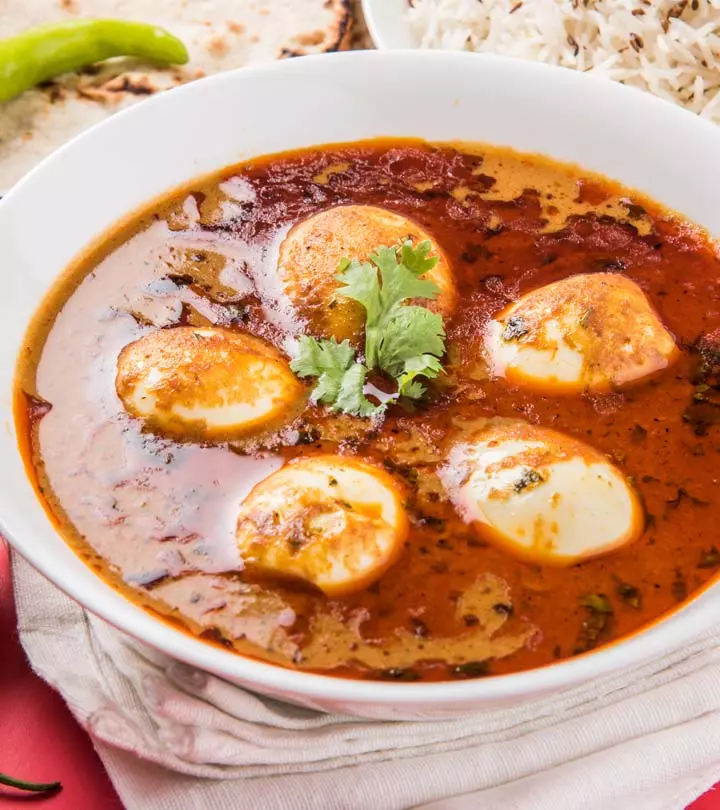
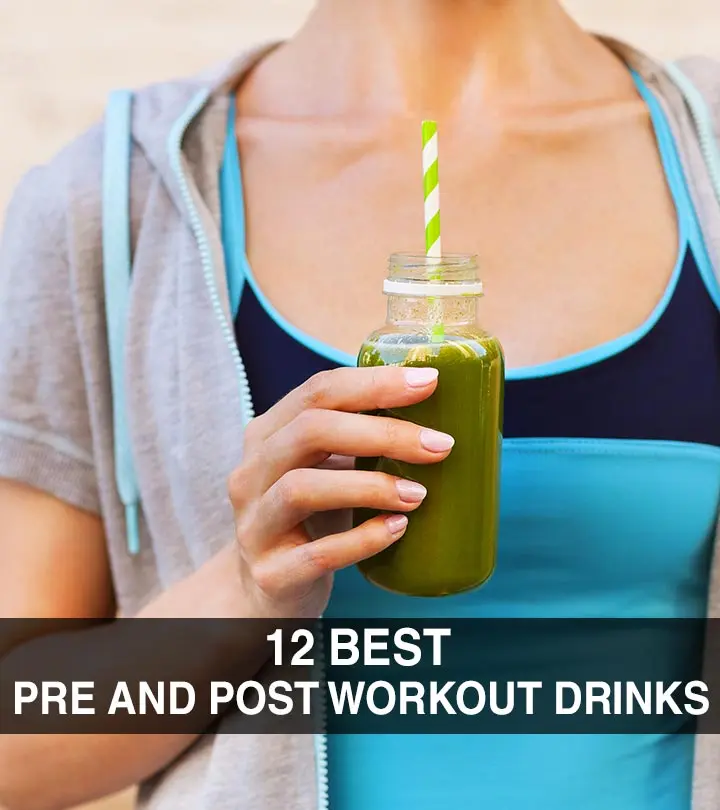



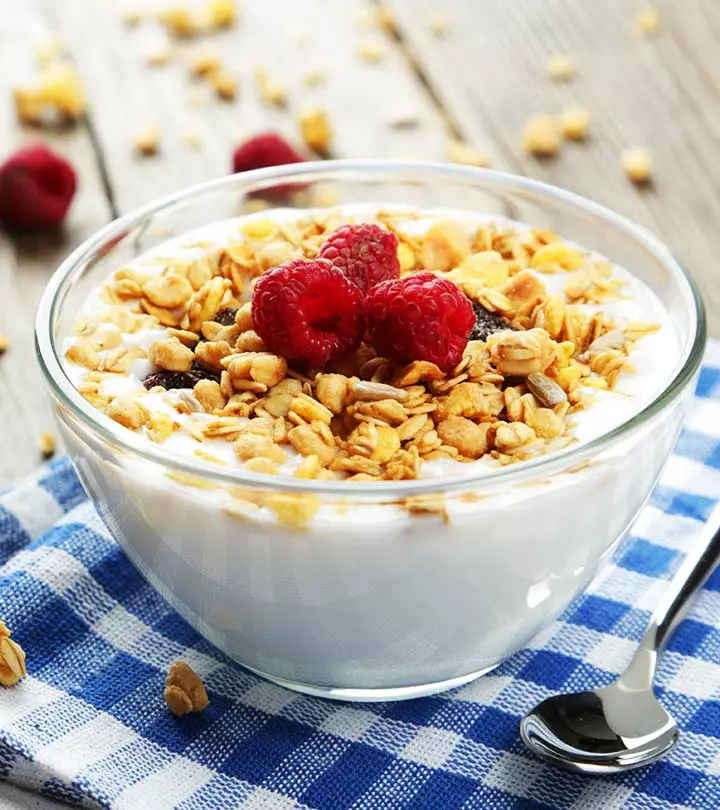
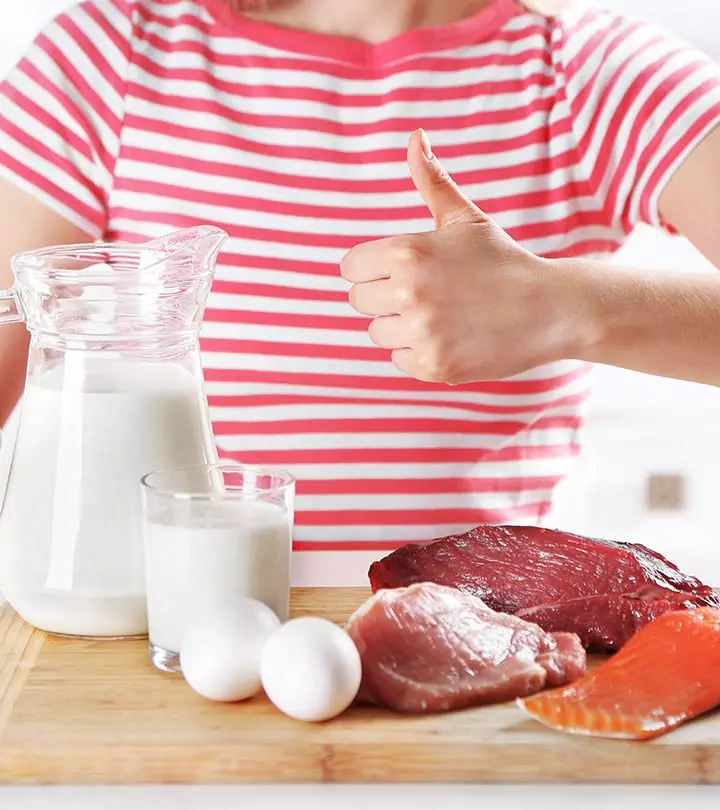
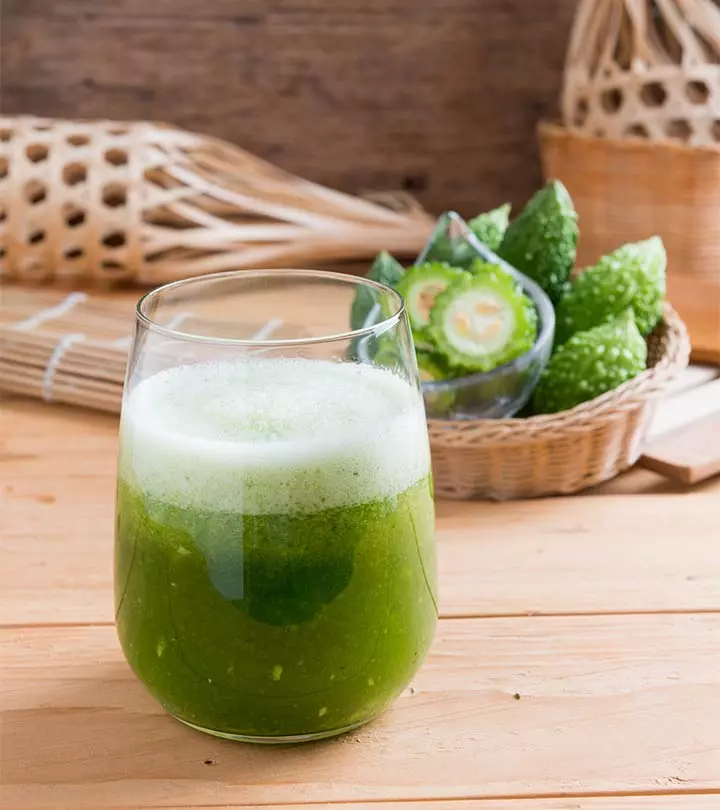
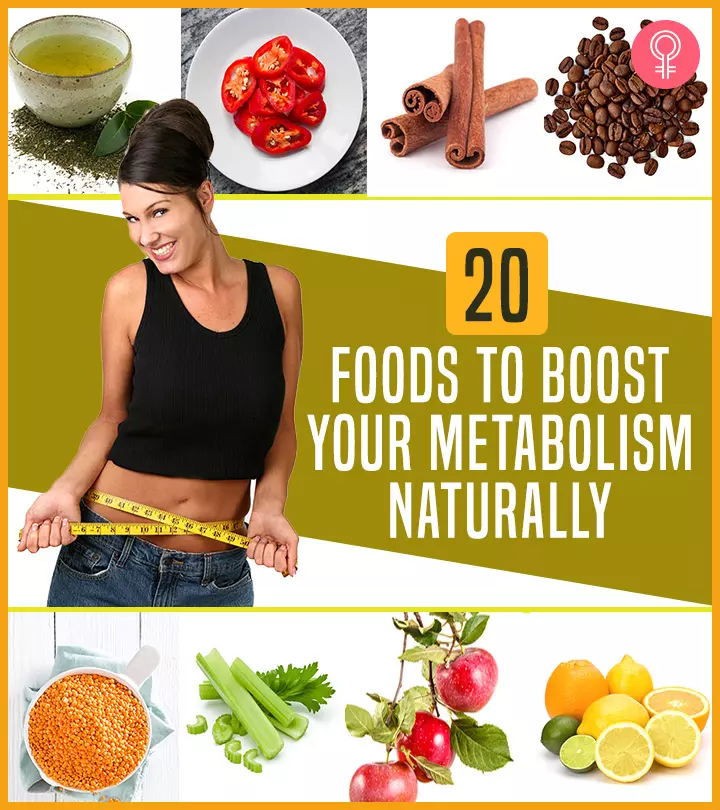


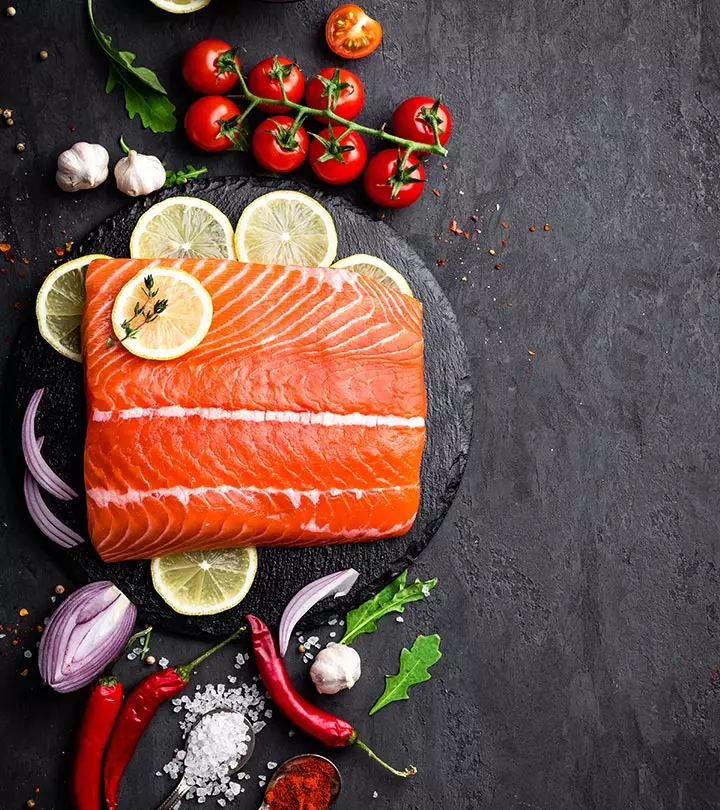
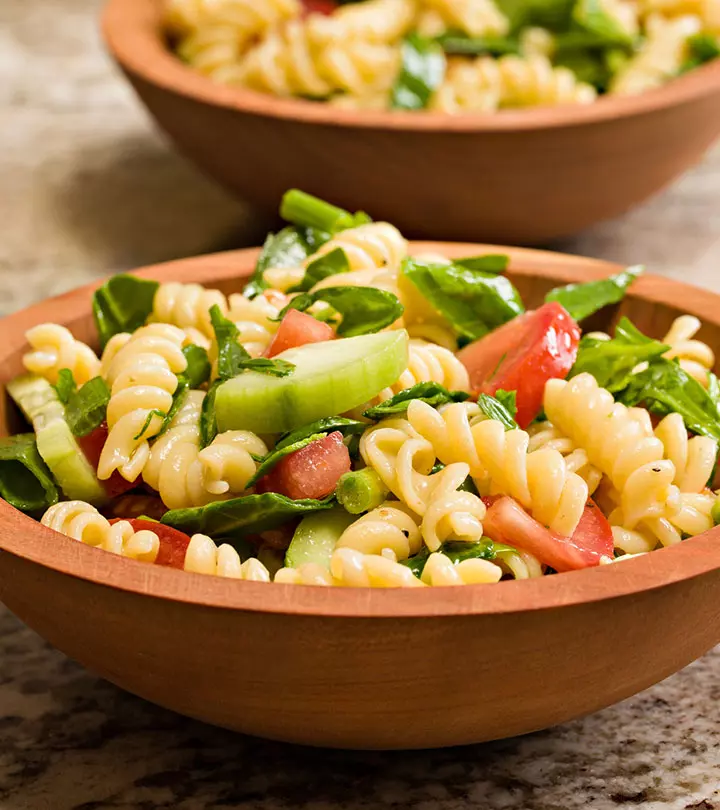
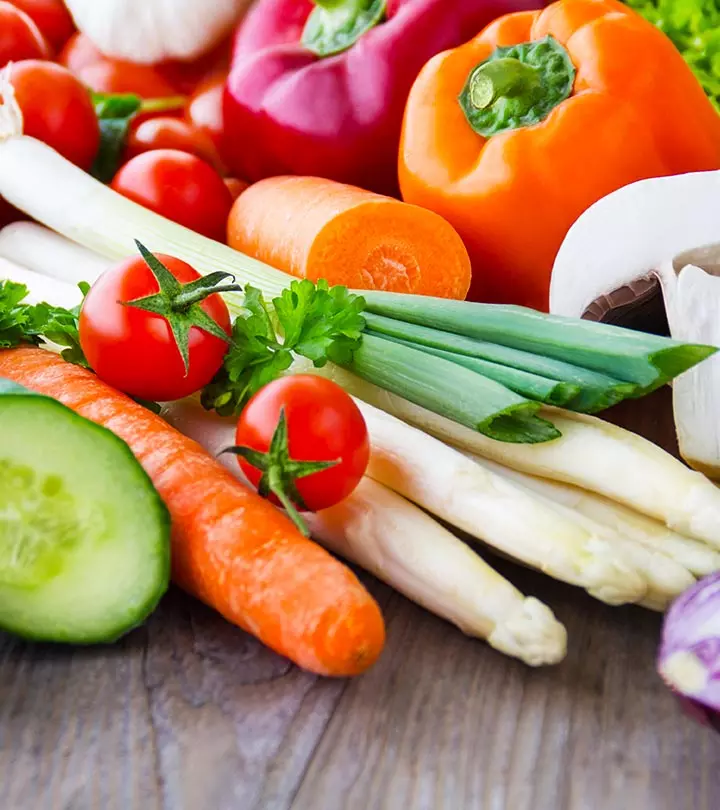
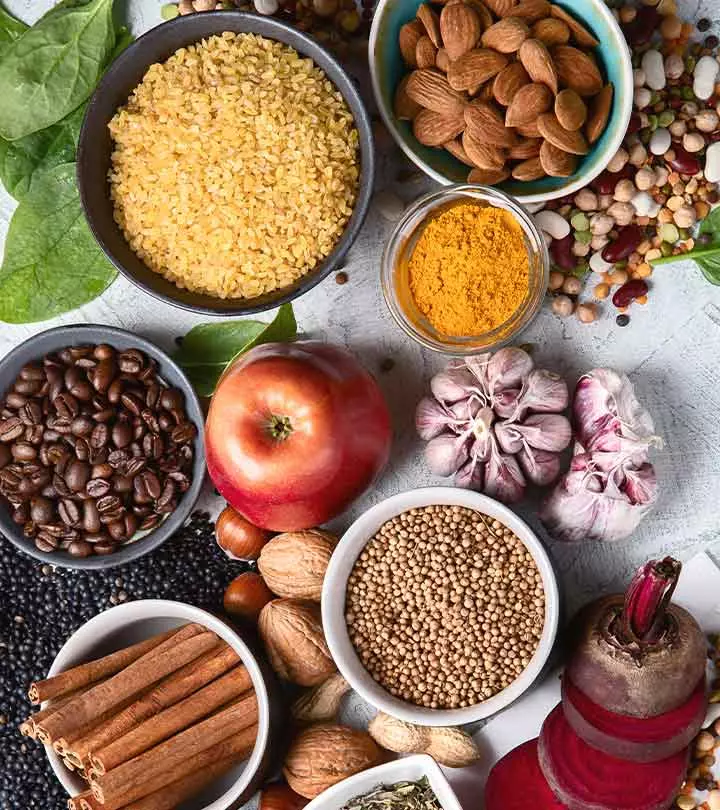
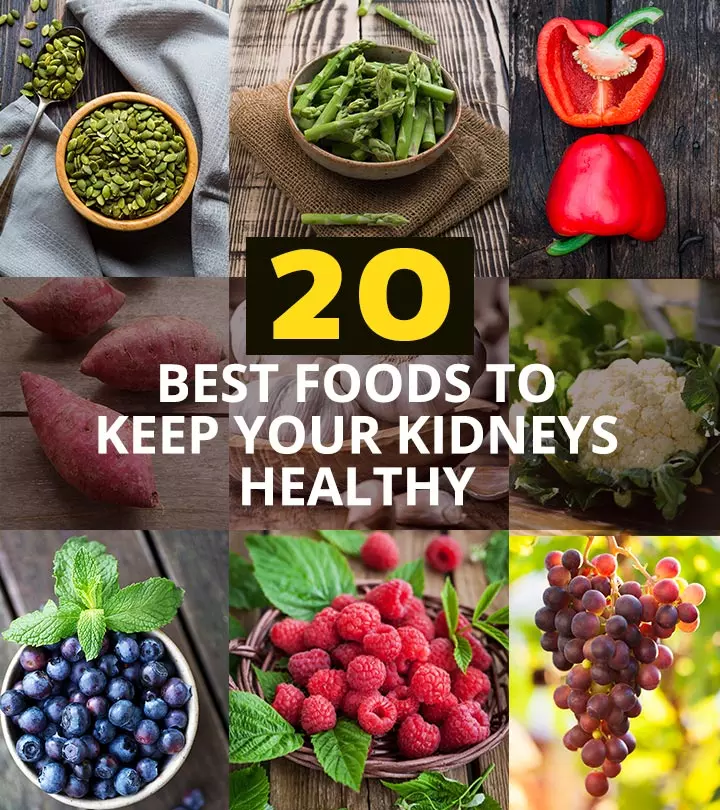
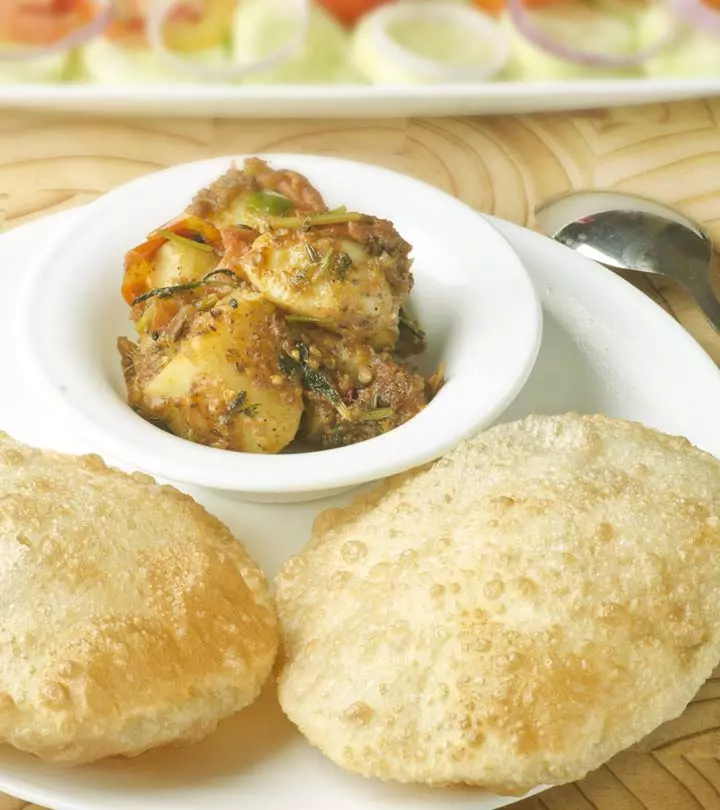
Community Experiences
Join the conversation and become a part of our empowering community! Share your stories, experiences, and insights to connect with other beauty, lifestyle, and health enthusiasts.